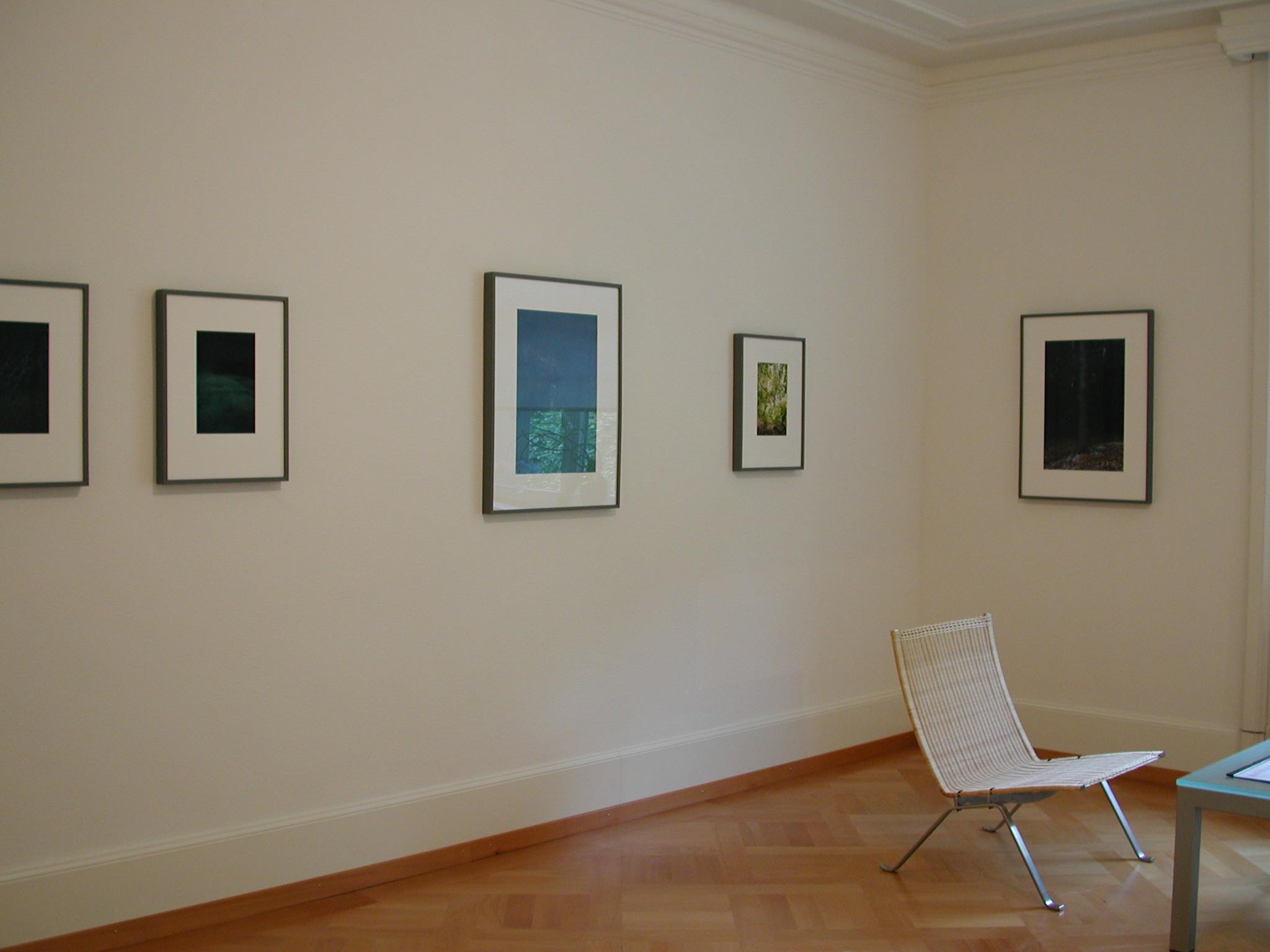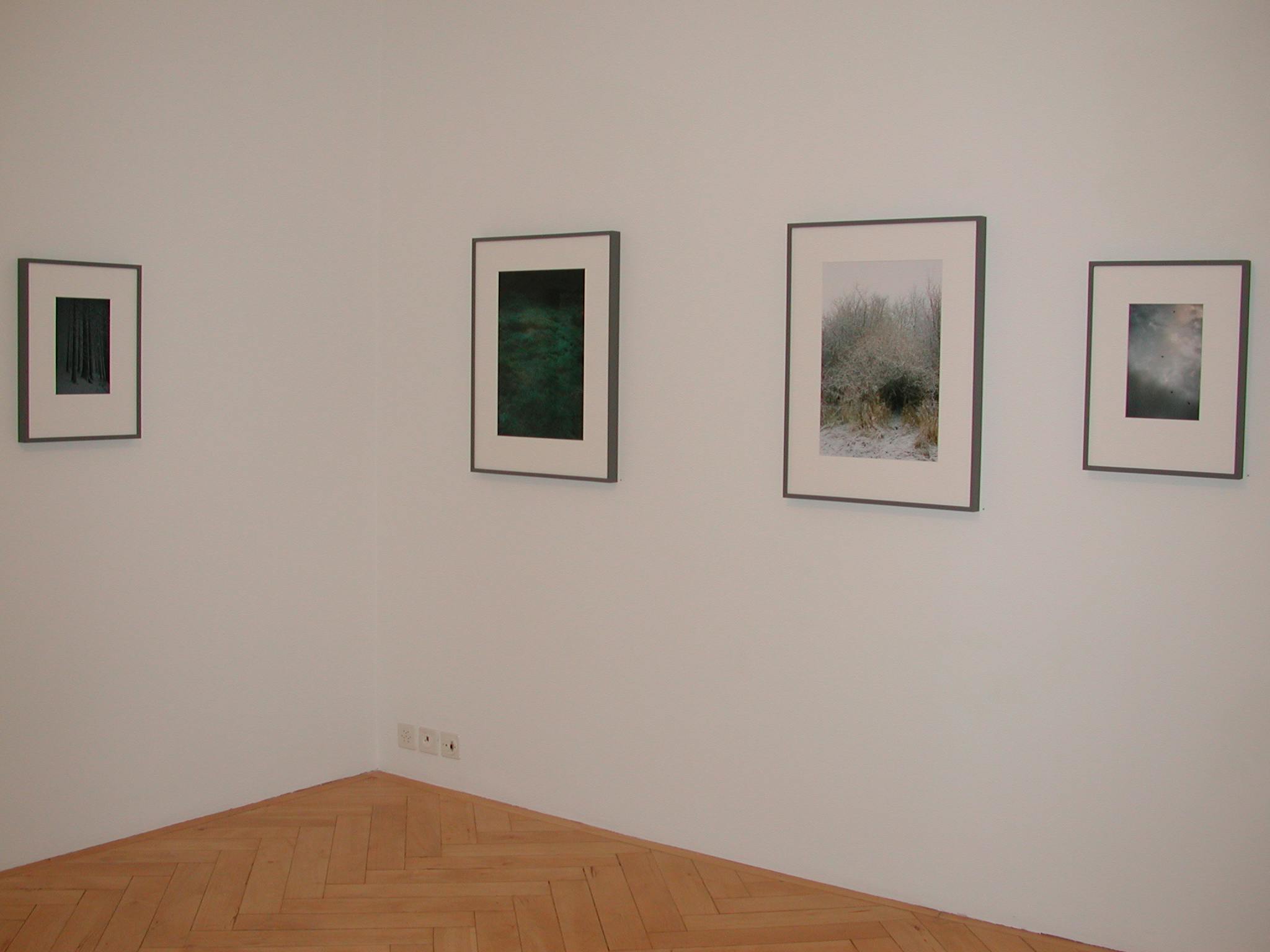We have great pleasure in presenting works from the new series Forest by the Czech artist Jitka Hanzlová (born in Nachod/Czech Republic in 1958, lives and works in Essen, Germany) in our showroom (Rämistrasse 37). Jitka Hanzlová is known for her work "Female" (1997-2000), a series of portraits of women of all ages whom she encountered on the streets of Europe and America.
Whereas "Female" would appear to be primarily documentary in character with a sociological undertone, the new series Forest (2000 – 2005) touches on a mystical dimension. Over a period of five years, Jitka Hanzlová photographed in the forests of her Czech homeland near the Carpathian mountains at various times of the day and year: the forest in the pale light of dawn, thin, filigree trees, some of them with broken trunks, snow-covered trees, a dimly-lit meadow in a glade, and deep-green ponds. A dark, damp tree trunk standing alone in the centre of the picture is reminiscent of Hanzlová's portraits, which always follow the same pattern – namely that of the motif arranged around its central axis.
With Forest, Hanzlová approached the scenes of her childhood. She had already explored her own roots in her first two series of photographs, Rokytník (1997), named after the Czech village of the same name, and bewohner (1996).
The themes of these prints are on the one hand the difference between the city and the countryside, on the other the similarities of experience in both contexts: the rural and restricted world of Hanzlová's home village with its natural evolved system of order, and the "caged" existence in a housing estate in the town. Here, she photographed the city as a new, desired environment after her flight from the village confinement, and also, in an entirely personal view, as a quasi-timeless series of events. In bewohner, she embarked on a biographical exploration of the conflict that arises from her past life in the "wide open" country and the more strictly structured and "closed-in" life in the city. In these photographs, the world of the bewohner (inhabitants) appears to be cluttered up by façade elements, whereas the background of the village pictures conveys a sense of expansiveness. No wonder that after her return to her native Rokytník Jitka Hanzlová saw the village, which she had once regarded as restricted and confined, through quite different eyes and was able to say: "The path I am on is a path back, in order to see into the future."
Delicate, fragile colours contribute to the atmosphere of the village pictures. The photographer frequently employs rare colour combinations with hidden, gentle or green light, a use of colour that give the images of the continually changing forest the appearance of timelessness. It seems that the portrayal of the presence of timelessness encompassing infinity and an incomprehensible power is one of Jitka Hanzlová's artistic goals.
Jitka Hanzlová, who moved to Germany in 1982 and studied photography and communication technology in Essen, was awarded the Otto Steinert Prize in 1993. In 2002 she was nominated for the London Citibank Prize for Photography, and she received the Grant Prix Award – Project Grant 2003, Arles, in 2003. She has participated in numerous group exhibitions, and her work has been shown internationally in solo exhibitions. [Dominique von Burg]





